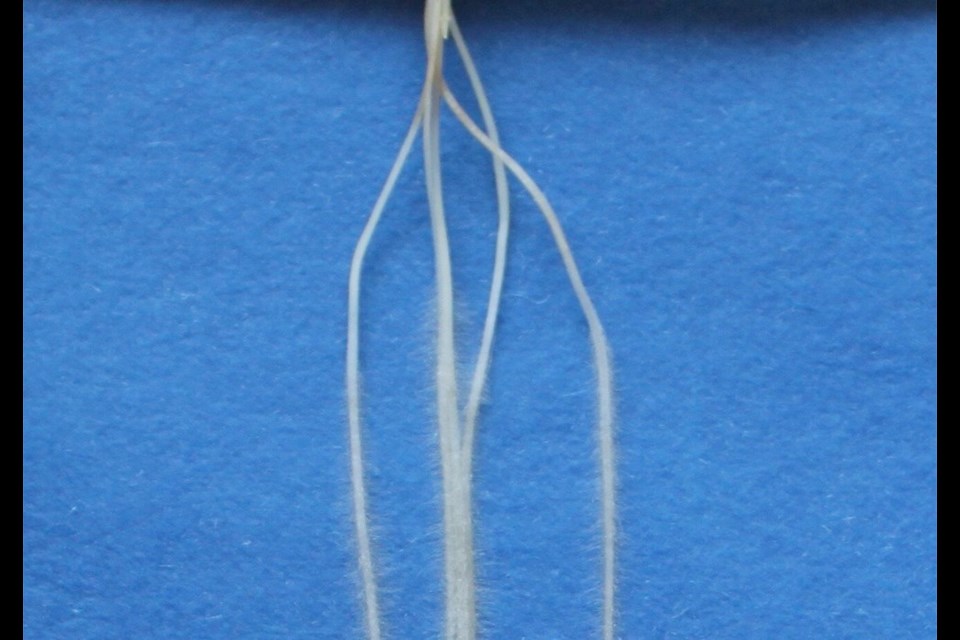Now, researchers from the universities of Bonn in Germany and Bologna, Italy, as well as colleagues in the United Kingdom have discovered a mutant in barley in which the roots grow straight down, rather than the typical growth pattern of spreading sideways or outwards.
A variation in the angle of root growth can affect the way roots anchor to, and explore, different soil layers to capture nutrients and water. This could open up opportunities for breeding more drought-resistant varieties.
The mutant root system was discovered during genetic work with the barley cultivar Morex at the University of Bologna.
Silvio Salvi, associate professor in the department of agri-food sciences and technologies at the university, said the group produced about 4,000 independent mutant lines. The collection, called TILLMore, was aimed at generating mutant plants to be used to identify the genetic and physiological basis of plant traits important for crop adaptations.
Barley is among the most important cereals with uses ranging from malting, food, feed and forage. According to Statistics Canada, barley crop production in 2020 was 10.7 million tonnes with an average yield of 71.8 bushels per acre in Western Canada.
The researchers compared the genome of the mutant barley with barley plants normally grown. They discovered that the mutation was located on chromosome number five, which they named “enhanced gravitropism 2”, or egt2. It basically means enhanced orientation to gravity.
Researchers then confirmed that egt2 characteristics were maintained when plants grow in soil.
The rarity of this mutation is significant because many mutants have short or missing roots rather than roots growing at different angles.
“Rare in this context means that only a few such root angle mutants were found so far,” said Frank Hochholdinger, Institute of Crop Science and Resource Conservation at the University of Bonn.
Ultimately, researchers were able to show that the mutant gene was responsible for the vertical growth of roots by creating a mutation in normal barley plants using the CRISPR/Cas 9 gene scissors. They grew the small barley plants in germination paper or soil and recorded the root angles using a scanner and special software.
They also grew barley in special “flowerpots” that fitted inside an MRI scanner, which allowed them to look through the soil and record the growth of the roots. To prove the sensitivity of the genetic mutation to the influence of gravity, they placed the roots of the barley seedlings at a 90-degree angle to the direction of gravity causing the roots to clearly grow toward gravitational influence compared to normal barley seedlings.
The scientists also collaborated with researchers from the John Innes Centre in Norwich, U.K. and were able to demonstrate that a similar mutant also exists in wheat plants.
“While there is a lot of variation concerning the degree of hypergravitropism between different barley cultivars, the homologous mutation in wheat also displayed a hypergravitropic phenotype,” said Hochholdinger. “This suggests that both evolution and domestication play a role in the manifestation of the root angle in cereals and in particular in barley.”
The influence of both evolution and domestication is a question the researchers are continuing to investigate.
“In a different study, we have screened for root gravitropism in a collection of about 500 barley lines including wild barley from all over the world,” said Salvi. “Interestingly, lines with hypergravitropic roots similar to our egt2 mutant were extremely rare (two out of 500 lines). Rather, a continuous range of variation of root gravitropism was observed. We are currently testing whether super-gravitropic or super-flat roots are associated with dry or humid environments.”
“Steeper roots are advantageous when it comes to tapping into water resources and mobile nutrients at greater depths,” said Hochholdinger.
“Conversely, a root system that grows in width penetrates a larger volume of soil and can therefore access nutrients over a larger area and gives the plants better stability. Which root system offers the better conditions for good yields depends on the individual location. In drier regions this could be steeper roots, while in more nutrient-poor areas, it could be the shallower ones.”
Salvi said, with all factors being equal, having deeper roots would be favourable in relatively mild drought conditions where the soil water table is deeper than usual in an otherwise fertile soil. But the devil is in the details when it comes to complications.
“First, egt2 acts by changing the root growth angle so, while root maximum depth is likely increased, the effective soil volume explored by the roots could decrease because of the narrower root growth showed by all root types,” said Salvi. “This could affect chemical nutrient acquisition efficiency. Second, a narrower (or wider) root system certainly affects plant-plant competition processes so that planting density should eventually be considered and perhaps adjusted. Third, egt2 likely acts though a yet unclarified mechanism of altered cell wall stiffness which could have important trade-off effects.”

